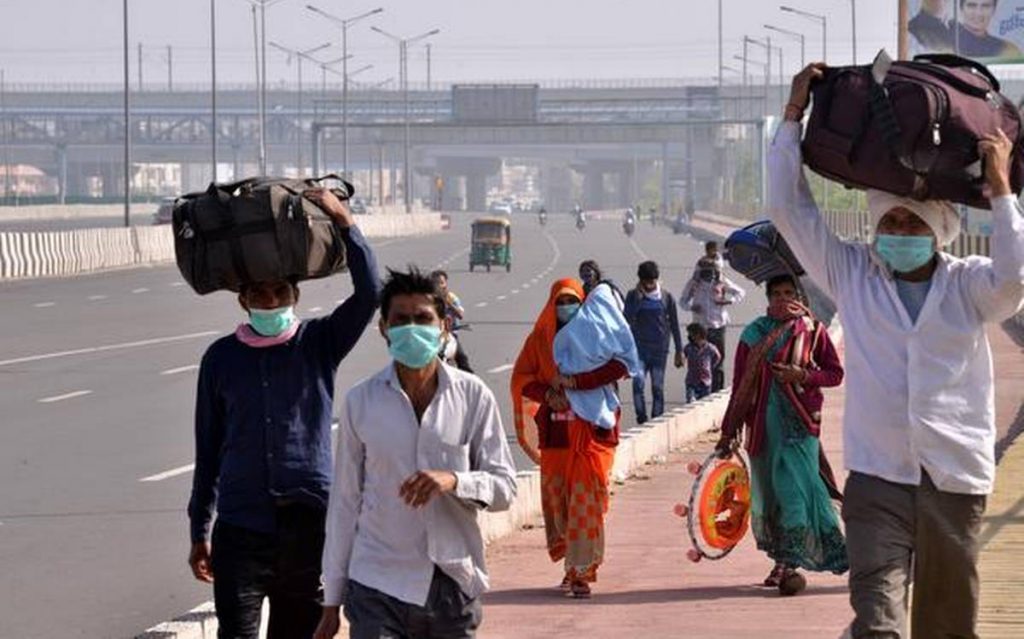Shivaji Sarkar
It is slobalisation across the globe. The world has applied the brakes on the economy due to an unprecedented civilizational lockdown. India, termed as the engine of global growth, has taken a big hit and it may take quite a few years for it to regain its strength. All economies in intense relationships having lost over 30 per cent of their GDP are now getting more local and regional. Never before has civilization panicked before an epidemic as it has unwisely done now. Let there be a probe whether or not this is a conspiracy to kill the Indian economy.
The supposed disease is not lethal, in the Indian context, but the panicky closure of all activities, travel and business has ruined the economy. Righty, former RBI governor Raghuram Rajan says India’s GDP contraction must alarm everyone. He is correct because India, the global growth leader, had started slowing down since August 2019 amid the Sino-US trade war, the thaw in the EU economy and fall in global demand. Even with some resumption of activities, the fall in GDP by minus 23.9 per cent in June quarter so far may also mean an average contraction of 14.8 per cent (Goldman Sachs) or 11.8 per cent (India Ratings) or 10.5 per cent (Fitch Ratings) for 2020-21. Most of these estimates indicate a looming deterioration in asset quality in the financial sector. The agencies are expecting positive growth, not before 2022. Fitch says India records the sharpest GDP contraction but expects a rebound.
The world stock markets are in tizzy except for tech giants like Apple, Microsoft, Amazon, Facebook and Google which have added $1 trillion to their market capitalisation. Cornerstone Macro says 100 of the 500 on Standard & Poor’s index, are trading at more than 50 per cent below their peak. The Indian situation is similar as we find that Reliance has added $10 million. Some other tech companies have done well. But most others in mid and small segments particularly airlines, real estate, hotels, restaurants are not in demand.
Through 2019, initial public offerings (IPO) dried up as volatility grips the market. Till August 2019,only 11 companies launched IPOs raising `10,049 crore compared to 24 public issues raising `20,559 core in 2018. There is an ‘X’ factor that is being discussed since August 2019 amid the then global growth slowing down, affecting the Indian economy. It is a twin balance sheet problem of high non-performing assets and credit stress in companies.
The job creation growth fell alarmingly since 2018-19, according to CARE Ratings study of 960 large companies, in farming, crude oil, telecom, iron and steel, mining and hospitality. In the large firms, the job growth was 4.2 per cent (5.78 million) against 6.2 per cent in 2017-18. The Centre for Monitoring Indian Economy estimated in 2018 that 11 million people lost their jobs – of this, 9.1 million in rural and 1.8 million in urban areas.
Rating agency ICRA has calculated that actual deficit for states would be `2.9 lakh crore, `57,000croremore than estimated, in 2021. The Centre’s shareable taxes at `13.4 lakh crore for the current financial year, ICRA says, is 30 per cent lower than the budgeted amount of `19.1 lakh crore.
The present developments reveal that 68 per cent of companies will see hurdle in recovery. The remedy suggested is simple – additional cash transfers to migrant workers, poor and farmers and a temporary halt in GST collection. The companies also want financial liquidity, managing costs, manpower availability and supply chain issue solutions. Though unlock has a positive impact, if the liquidity and transactions in cash do not improve, the hiring and expansions may not happen.
–INFA
